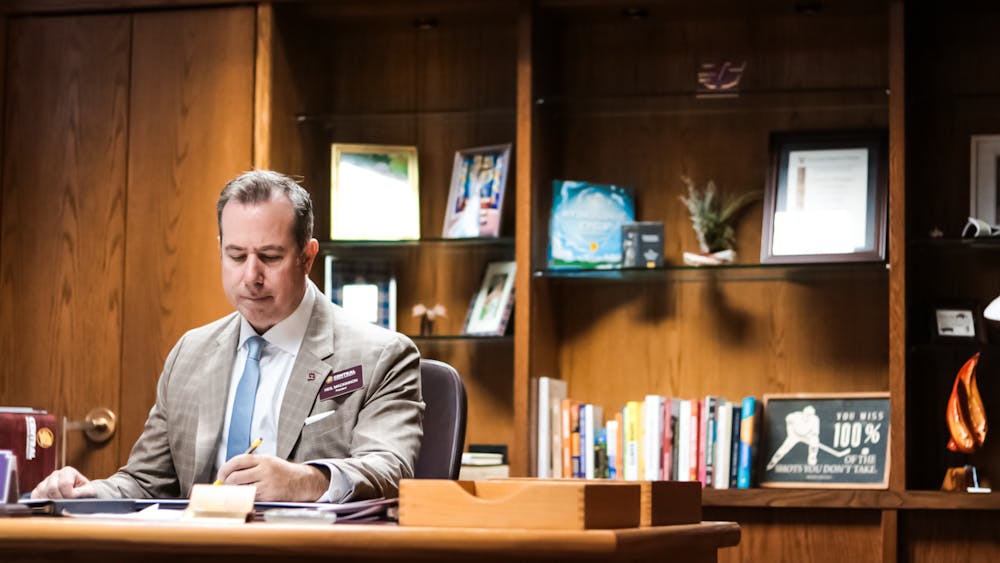Emergency policy updated with faculty, staff input since March 2 shooting

After James Eric Davis Jr. shot and killed his parents on the fourth floor of Campbell Hall, students and faculty wondered how the shooting may change policy in the future.
One year later, the March 2 shooting has inspired multiple initiatives from administration and faculty.
Jonathan Webb, associate vice president of Facilities Management, has worked to compile feedback from faculty and staff to construct a more comprehensive emergency management plan.
“It’s set up not only for emergency preparedness, but also to take action," Webb said. "If something does occur, we want to get them to that web page right away so they can see in real time what are the four or five steps I need to do during this situation.”
The emergency planning webpage contains information on what to do in the case of an active shooter, fire, bomb threat and severe weather situations. The site outlines how to prepare for emergency situations and steps to take in those scenarios.
Changes to the emergency planning website have been ongoing, and much has been done to make existing information more accessible, said Heather Smith, director of communications.
Input was collected from listening sessions held where faculty and staff could voice their concerns and provide comments about the emergency plan, Webb said.
Administration also walked into offices of faculty and staff to gather input, Smith said.
Central Michigan University Faculty Association President Anthony Feig said comprehensive training would be difficult to do on a campus-wide scale because of how varied the buildings can be.
"The tricky part about training is that every classroom is different," Feig said. "Some doors close differently, not all of them have the quick-locks and some classrooms are harder than others to hide under tables."
Sociology faculty member Mary Senter said that while she did learn some things following March 2, there are still things she'd like to know.
"I would appreciate additional training on my responsibilities toward students during a lockdown, and also on the best practices to keep students safe if there was an active shooter in the building where I teach," Senter said.
Senter learned that in the case of an emergency she can lock classroom doors from the inside, call 911 and call the CARE team in the case of an emergency affecting a single student, she said.
CMU Police Officer Lt. Cameron Wassman said individuals or groups can reach out to have an in person safety training presentation and they are open to students, faculty and staff. To schedule an in-person training, contact Wassman at wassm1cd@cmich.edu or (989)774-7696.
CMUPD Chief Bill Yeagley emphasized the importance of being familiar with emergency plans and staying informed of what to do in an emergency.
“The more you’re prepared to keep yourself safe, the more likely you’ll be safe," Yeagley said.






